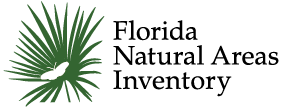Ochrosia elliptica


Common Name: elliptic yellowwood
Family: Apocynaceae
Common Synonyms: none
USDA Hardiness Zone: 10b-11b
Growth Habit: Shrub or small tree
Origin: Australia and New Caledonia
FISC Category: -
FDACS Listed Noxious Weed: No
Introduction Date: Earliest Florida specimen was a cultivated specimen from 1959
IFAS Assessment:

Tree to 6 m tall. Exudes copious white sap when injured. Petiole 1.5-2 cm; leaf blade obovate to broadly elliptic, 8-15 X 3-5 cm, apex obtuse or short acuminate. Inflorescence cymose. Flowers sessile. Corolla white, cylindric, tube ca. 1 cm; lobes linear, ca. 6 mm. Drupes ellipsoid, 2-4 X ca. 1 cm, red at maturity.
NA
Flowers June and latex containing.

NA
IFAS, UF. 2017. Assessment of Non-Native Plants in Florida's Natural Areas. Ochrosia elliptica. https://assessment.ifas.ufl.edu/assessments/ochrosia-elliptica/ Accessed April 3, 2022.
Wunderlin, R. P., and B. F. Hansen. 2008. Atlas of Florida Vascular Plants (http://florida.plantatlas.usf.edu/).[S. M. Landry and K. N. Campbell (application development), Florida Center for Community Design and Research.] Institute for Systematic Botany, University of South Florida, Tampa.
eFloras (2008). Published on the Internet http://www.efloras.org/florataxon.aspx?flora_id=2&taxon_id=200018426 [accessed 3 August 2022] Missouri Botanical Garden, St. Louis, MO & Harvard University Herbaria, Cambridge, MA.
